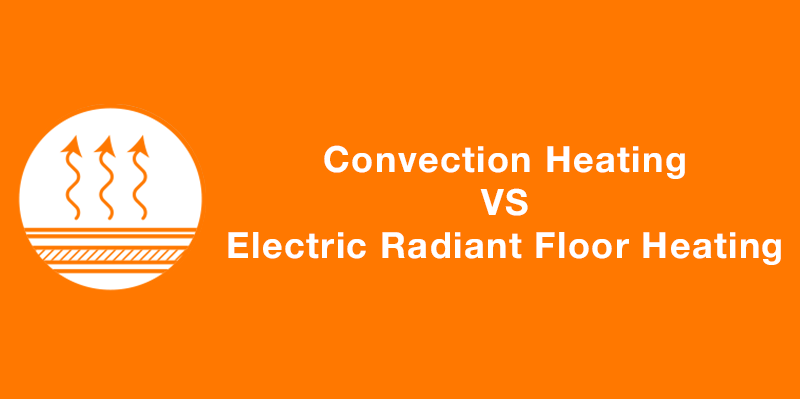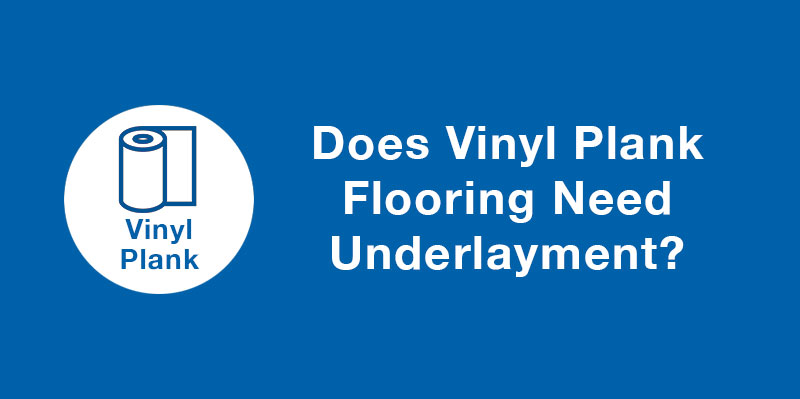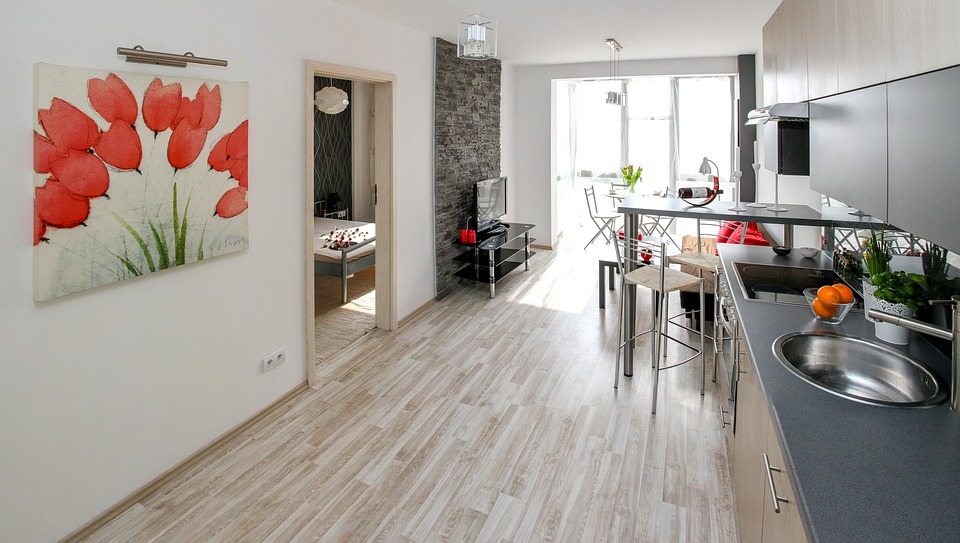Looking for Underlayment for Vinyl Plank Flooring?
We recognize that luxury vinyl plank is a growing trend in the flooring industry due to its waterproofing capability. It does have benefits for the DIY/homeowner market. In this post, we will cover the following:
- Does Vinyl Plank Need Underlayment?
- What Underlayment Is Made For Luxury Vinyl?
- What Installation Issues Could Arise With Luxury Vinyl Flooring?
Does Vinyl Plank Need Underlayment?
The answer to this question really depends on you flooring manufacturers installation instructions. Knowing what they require will keep your flooring warranty however if you are looking for sound reduction, then underlayment is ideal to put under vinyl plank. Another article was created going further into detail such as density of underlayment needed for luxury vinyl.
What Underlayment Is Made For Luxury Vinyl?
MP Global Products offers two flooring underlay to be used under luxury vinyl. One underlayment is QuietWalk Luxury Vinyl (fiber/felt underlayment) offering superior sound reduction and a dense material to allow the floor lay firmly against the subfloor. Second underlayment is SoundBuffer (foam underlayment)
QuietWalk Luxury Vinyl
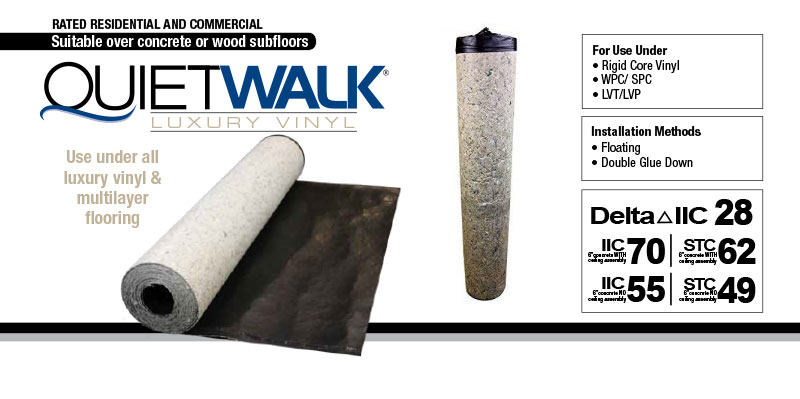
With density in mind, we tweaked the fiber formula from our other popular QuietWalk for laminate flooring. Same benefits as the famous QuietWalk, just thinner/denser which eliminates movement when walking on vinyl plank flooring.
We’ve heard of other underlayment causing compression issues once they installed their LVP. This was due to the underlayment having to much “compression”. It can be costly for DIY or contractors to rip up the old flooring.
QuietWalk Luxury Vinyl Sound Ratings
- IIC Sound Rating – Impact Vibration Sounds: 70
- STC Sound Rating – 62
- Delta IIC Sound Rating – Home-owners should be comparing this number to other underlayments – 28
SoundBuffer Underlayment for Vinyl Plank Flooring and More
MP Global Products introduces SoundBuffer, a high-performing universal underlayment for vinyl plank flooring that offers full subfloor coverage while soothing impact sound and floor to ceiling noise. Its carefully engineered properties enable flooring installers to use one underlayment for many types of hard-surface floors in residential and commercial projects.
Made from 100 percent virgin latex rubber, SoundBuffer is approved for use under:
- Luxury Vinyl Tiles
- Luxury Vinyl Plank
- Laminate Flooring
- Engineered Wood
- Hardwood Flooring
SoundBuffer can be floated, nailed, stapled, single or double-glued. If single glued, it can turn a double-glue installation into a floating floor.
Providing excellent value, the competitively priced Sound Buffer has strong physical properties, including 1.2-millimeter thickness, a density of 25 pounds per cubic foot, and a compression set of 16 percent-a carefully engineered combination that helps minimize impressions and indentations that can occur with luxury vinyl flooring. It also has a thermal resistance of 0.205, and anti-microbial properties.
SoundBuffer Underlayment Sound Test for Luxury Vinyl Flooring
Sound tests have achieved excellent ratings. These include:
- IIC Test: 6-inch concrete subfloor with no ceiling assembly with luxury vinyl planks floor covering
- Result: 52 – A rating that exceeds the standard for high-rise installations.
- IIC Test: 6-inch concrete subfloor with a suspended ceiling assembly with luxury vinyl planks floor covering
- Result: 68
- STC Test: 6-inch concrete subfloor with a suspended ceiling with luxury vinyl planks floor covering
- Result: 64
- STC Test: 6-inch concrete subfloor with no ceiling assembly with luxury vinyl planks floor covering
- Result: 52
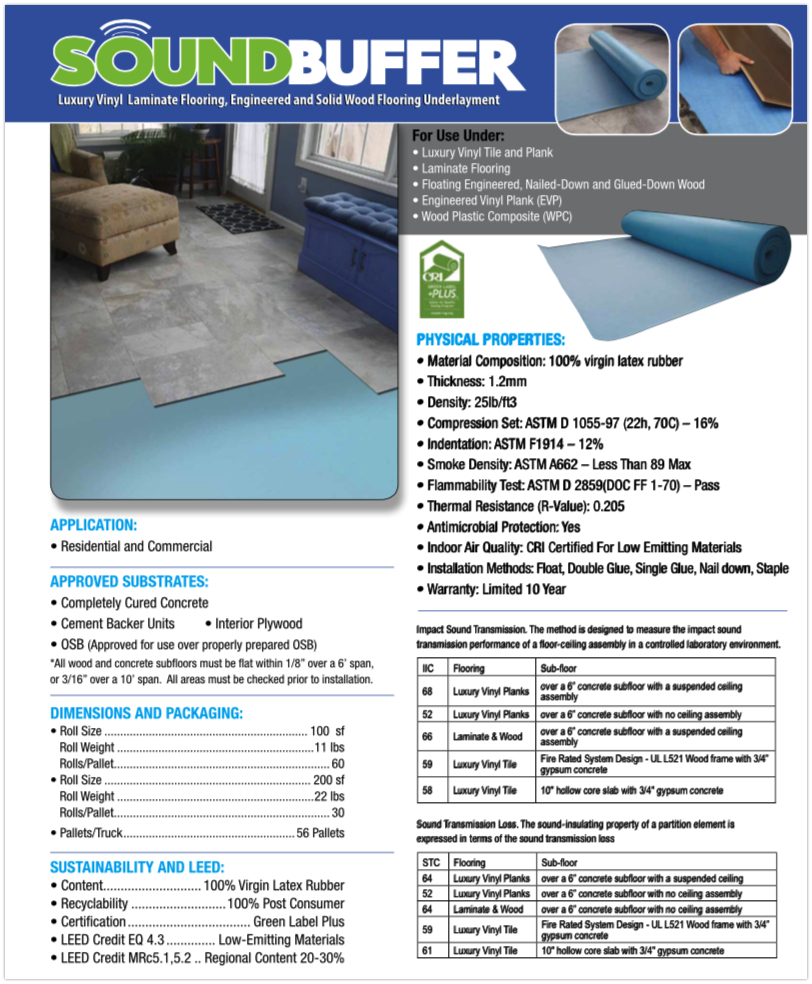
SoundBuffer offers a compression (ASTM D 1055-97 (22h, 70C) of 16 percent that works nicely under LVF and, unlike the compression percentage of most underlayments suitable for luxury vinyl flooring, is hearty enough to install under floating wood and laminate floors, as well.
SoundBuffer also carries Green Label Plus Certification for Low-Emitting Materials from the Carpet and Rug Institute and can contribute to earning LEED Credit EQ 4.3 (low-emitting materials), LEED Credit MRc5.1-5.2 for Regional Content 20-30 percent; and LEED Credit IEQp3 Minimum Acoustical Performance. And post-consumer use, it is 100 percent recyclable.
SoundBuffer is available in 36-inch-wide 200-square-foot rolls, with or without seam tape.
What Installation Issues Could Arise With Luxury Vinyl Flooring?
To install luxury vinyl properly in any room, the subfloor needs to be prepared. It is vitally important and any irregularities in the subfloor will show through to your floor. High and low ares will show. A dense underlayment like Quiet Walk Luxury Vinyl offers the performance your LVT needs to lie firmly against your subfloor and also hide minor irregularities.
Original Article: Retrofit Magazine – February 5, 2016
Posted on: Monday, February 8, 2016
Join Our Newsletter
You are about to install your new flooring. As you lay the first plank you realize that




